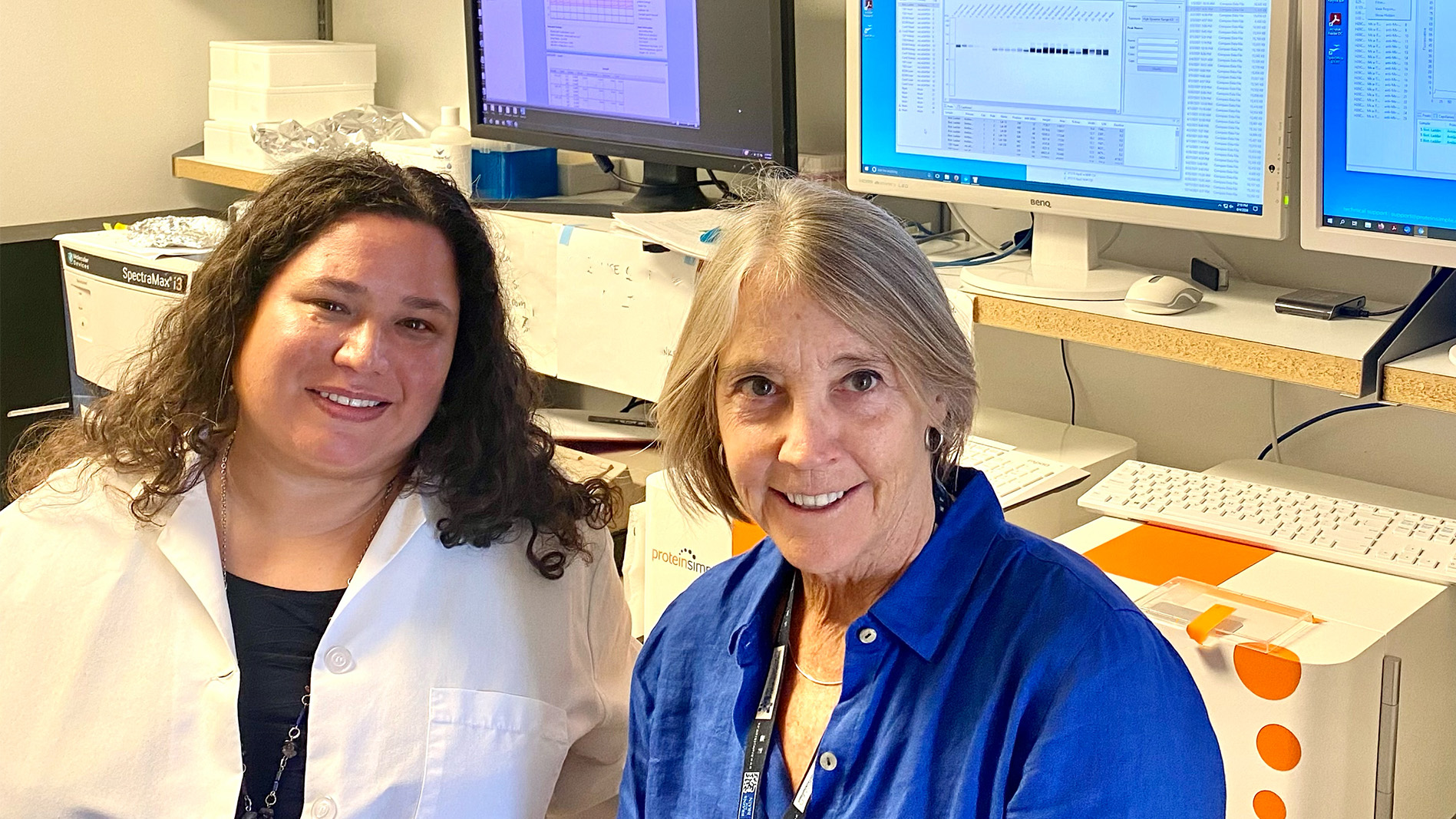Correcting Fragile X Syndrome Deficits by Targeting Neonatal PKCε Signaling in the Brain

Beverly Davidson, PhD
Principal Investigator
Carolyn Yrigollen, PhD
FRAXA Postdoctoral Fellow
Children’s Hospital of Philadelphia
Philadelphia, PA
2024-2025 Grant Funding: $100,000
Summary
Gene editing is a type of gene therapy that can be used to add, remove or alter DNA in cells. This study aims to find out whether state-of-the-art gene editing tools and techniques could potentially be used to treat Fragile X syndrome.
The Science
by Beverly Davidson, PhD and Carolyn Yrigollen, PhD
New strategies to correct the FMR1 full mutation using gene editing technologies are showing promise in labs across the country. We will make start-of-the-art delivery vectors of prime editors to test them as therapeutics in a unique mouse model of Fragile X syndrome (FXS). The goal of this study is to determine if the potent delivery and editing tools under development will reach relevant regions of the brain to rescue FXS-like symptoms in mice.
Treating neurological disorders like Fragile X syndrome requires both powerful therapeutics and potent delivery systems. When treating neurological disorders, many delivery methods struggle to reach critical regions of the brain because of its complex structure and wide range of cell types.
The best approach to test therapeutic delivery for safety and efficacy is in animal models of the disease being treated. Since the most common cause of Fragile X syndrome is the full mutation, delivering gene editing tools to an animal that models the full mutation would be ideal. Unfortunately, an animal with expanded CGG repeats that silences the FMR1 gene is unavailable, despite several attempts by the field.
A unique mouse model was developed by Dr. Darnell’s group that inserted a clinically relevant I304N mutation into the mouse Fmr1 gene and leads to loss of Fmrp function and phenotypes that are like FXS symptoms. This model provides a way to test delivery of gene editing constructs to correct FMR1 mutations.
With the Davidson laboratory’s novel adeno-associated-virus (AAV) capsid, AAV.1999, we will optimize and package prime editors that will correct the asparagine (N) back to isoleucine (I) in human and mouse DNA. We will then test this therapeutic approach in the brains of mice to evaluate how successfully it rescues the FXS-like symptoms and cellular features present in the I304N model.
This work provides an important bridge to our current understanding of how gene editing may be applied, if it will be relevant for treating Fragile X syndrome, and what areas of the brain we need to reach with Fragile X therapies.
Meet the Scientist(s)
Beverly Davidson, PhD is Director of the Perelman Center for Cellular and Molecular Therapeutics and Chief Scientific Strategy Officer at Children’s Hospital of Philadelphia.
Carolyn Yrigollen, PhD is a Research Associated Scientist II at Children's Hospital of Philadelphia (CHOP) and a FRAXA Postdoctoral Fellow in Dr. Davidson's lab.

